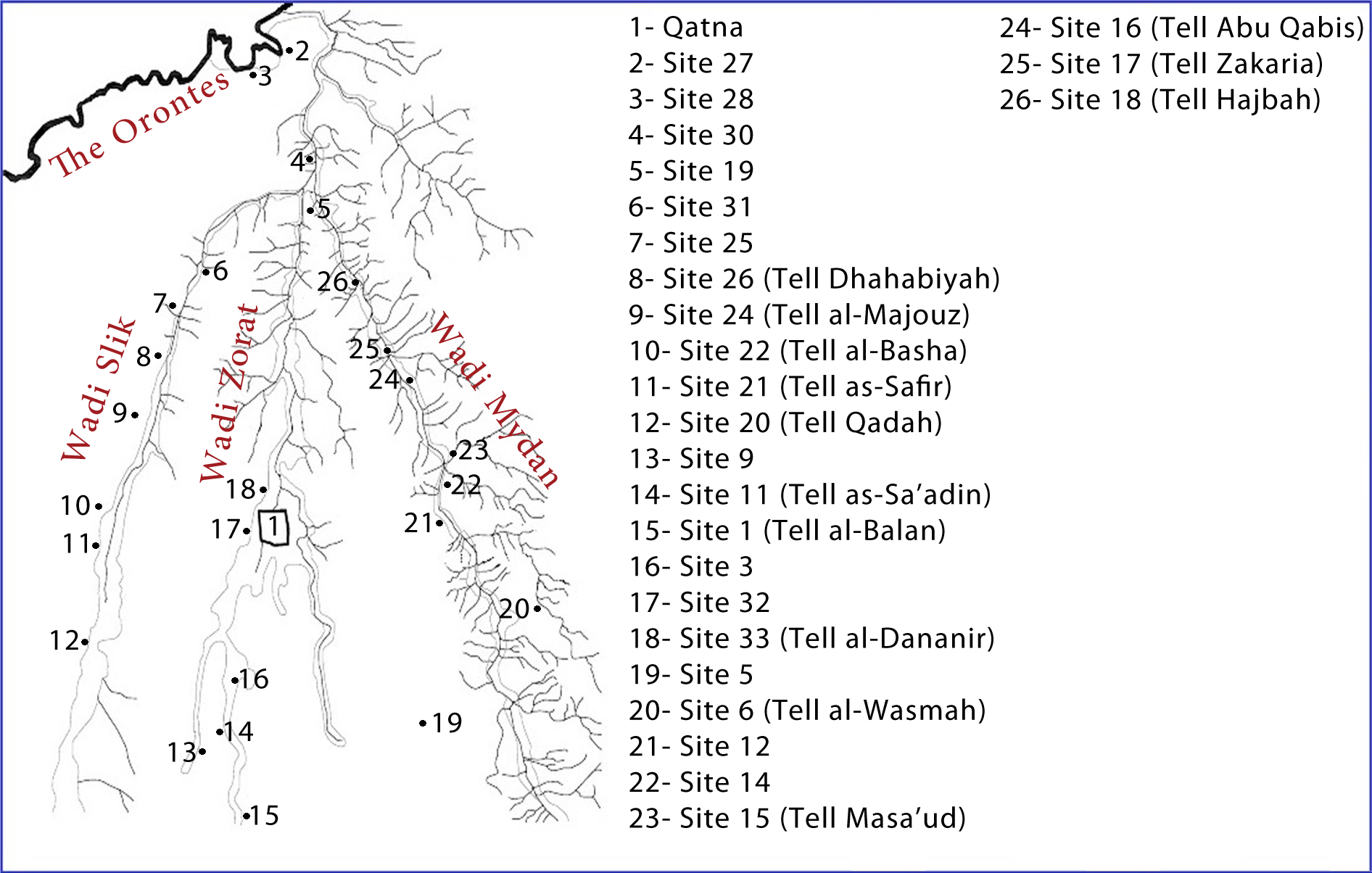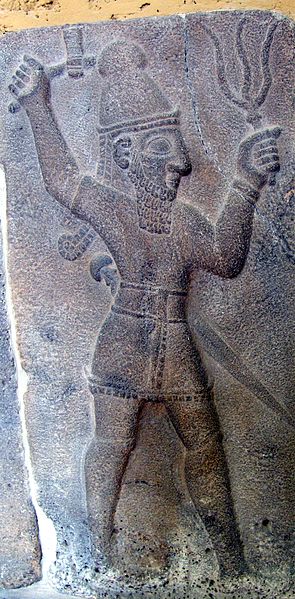|
Niya Kingdom
Niya, Niye, and also Niy of Thutmose I's Ancient Egypt, also Nii of the Amarna letters, and Nihe, etc. was a kingdom in Syria, or northern Syria. In the Amarna letters correspondence of 1350- 1335 BC, ''Nii'' is only referenced in two letters, but each is of some importance. The city of Tunip in the northern Levant had been trying to communicate to the Egyptian pharaoh for two decades, and finally resorted to another letter, EA 59: entitled: ''"From the citizens of Tunip"'', ( EA for 'el Amarna'). The city-state of Arqa also sent a letter to pharaoh, requesting aid (EA 100). The other letter referencing ''Nii'' concerns the individual Etakkama, his collusion with the Hittites, and the takeover of territory, 'city-states', and peoples in the northern and western Levant. Amarna letters ''"Nii"'', 2--letters EA 59, title: "From the citizens of Tunip" :"To the king of Egypt, our lord: Message of "the citizens of Tunip", your servant. For you may all go well. And we fall at the ... [...More Info...] [...Related Items...] OR: [Wikipedia] [Google] [Baidu] |
Thutmose I
Thutmose I (sometimes read as Thutmosis or Tuthmosis I, Thothmes in older history works in Latinized Greek; Ancient Egyptian: '' ḏḥwtj- ms'', ''Tʼaḥawtī-mīsaw'', , meaning "Thoth is born") was the third pharaoh of the 18th Dynasty of Egypt. He received the throne after the death of the previous king, Amenhotep I. During his reign, he campaigned deep into the Levant and Nubia, pushing the borders of Egypt farther than ever before in each region. He also built many temples in Egypt, and a tomb for himself in the Valley of the Kings; he is the first king confirmed to have done this (though Amenhotep I may have preceded him). Thutmose I's reign is generally dated to 1506–1493 BC, but a minority of scholars—who think that astrological observations used to calculate the timeline of ancient Egyptian records, and thus the reign of Thutmose I, were taken from the city of Memphis rather than from Thebes—would date his reign to 1526–1513 BC. He was succeeded by his son T ... [...More Info...] [...Related Items...] OR: [Wikipedia] [Google] [Baidu] |
Thutmose III
Thutmose III (variously also spelt Tuthmosis or Thothmes), sometimes called Thutmose the Great, was the sixth pharaoh of the Eighteenth Dynasty. Officially, Thutmose III ruled Egypt for almost 54 years and his reign is usually dated from 28 April 1479 BC to 11 March 1425 BC, from the age of two and until his death at age fifty-six; however, during the first 22 years of his reign, he was coregent with his stepmother and aunt, Hatshepsut, who was named the pharaoh. While he was shown first on surviving monuments, both were assigned the usual royal names and insignia and neither is given any obvious seniority over the other. Thutmose served as the head of Hatshepsut's armies. During the final two years of his reign, he appointed his son and successor, Amenhotep II, as his junior co-regent. His firstborn son and heir to the throne, Amenemhat, predeceased Thutmose III. He would become one of the most powerful pharaohs of the 18th dynasty. Becoming the sole ruling pharaoh of the ... [...More Info...] [...Related Items...] OR: [Wikipedia] [Google] [Baidu] |
Arsawuya
Arsawuya was a 'mayor' of Ruhizzi, located east of ''Qidšu''-(Kadesh), and farther east beyond the Anti-Lebanon mountain range, during the 1350–1335 BC Amarna letters correspondence. He is referenced in five letters, two letters of which he wrote to the Egyptian pharaoh, letters EA 191, and 192, ( EA for 'el Amarna'). Arsawuya's second letter The complete topic of Arsawuya's second letter is missing because of a multi-sentence lacuna. EA 191, ''"Preparations for war"'' :To the king, my lord: Message of ''Arsawuya'', the ruler of Ruhizza. I fall at the feet of the king, my lord. The king, my lord, wrote to me to make preparations before the arrival of the archers of the king, my lord, and before the arrival of his many commissioners. :And could I think of not serving the king, my lord? :May I join up with the archers of the king and his commissioners so that, having everything prepared, I might follow them wherever they are at war against the king, my lord, and we capture them ... [...More Info...] [...Related Items...] OR: [Wikipedia] [Google] [Baidu] |
Qatna
Qatna (modern: ar, تل المشرفة, Tell al-Mishrifeh) (also Tell Misrife or Tell Mishrifeh) was an ancient city located in Homs Governorate, Syria. Its remains constitute a tell situated about northeast of Homs near the village of al-Mishrifeh. The city was an important center through most of the second millennium BC and in the first half of the first millennium BC. It contained one of the largest royal palaces of Bronze Age Syria and an intact royal tomb that has provided a great amount of archaeological evidence on the funerary habits of that period. First inhabited for a short period in the second half of the fourth millennium BC, it was repopulated around 2800 BC and continued to grow. By 2000 BC, it became the capital of a regional kingdom that spread its authority over large swaths of the central and southern Levant. The kingdom enjoyed good relations with Mari, but was engaged in constant warfare against Yamhad. By the 15th century BC, Qatna lost its hegemony an ... [...More Info...] [...Related Items...] OR: [Wikipedia] [Google] [Baidu] |
Akizzi
Prince Akizzi was the ruler of Qatna Qatna (modern: ar, تل المشرفة, Tell al-Mishrifeh) (also Tell Misrife or Tell Mishrifeh) was an ancient city located in Homs Governorate, Syria. Its remains constitute a tell situated about northeast of Homs near the village of al ... in the fourteenth century BC. Prince Akizzi wrote three of the Amarna letters correspondence. References *''Journal of the Royal Asiatic Society of Great Britain and Ireland'', 1990, Cambridge University Press for the Royal Asiatic Society 1990, p. 52 *K. A. Kitchen, ''Ramesside Inscriptions'', Blackwell Publishing 2000, p. 67 *G. Maspero, 1904, ''History of Egypt'', Part Four, Kessinger Publishing 2003, p. 278 *William L. Moran, ''The Amarna Letters'', Johns Hopkins University Press, 1987 External linksLetters from Akizzi of Qatna Amarna letters writers Qatna 14th-century BC rulers 14th-century BC people {{AncientNearEast-bio-stub ... [...More Info...] [...Related Items...] OR: [Wikipedia] [Google] [Baidu] |
Zemar
Sumur (Biblical Hebrew: ollective noun denoting the city inhabitants Egyptian: ''Smr''; Akkadian: ''Sumuru''; Assyrian: ''Simirra'') was a Phoenician city in what is now Syria. It was a major trade center. The city has also been referred to in English publications as Simyra, Ṣimirra, Ṣumra, Sumura, Ṣimura, Zemar, and Zimyra. Sumur (or "Sumura") appears in the Amarna letters (mid-14th century BCE); Ahribta is named as its ruler. It was under the guardianship of Rib-Addi, king of Byblos, but was conquered by Abdi-Ashirta's expanding kingdom of Amurru. Pro-Egyptian factions may have seized the city again, but Abdi-Ashirta's son, Aziru, recaptured Sumur. Sumur became the capital of Amurru. It is likely, although not completely certain, that the "Sumur" of the Amarna letters is the same city later known as "Simirra." Simirra was claimed as part of the Assyrian empire by Tiglath-Pileser III in 738 BCE, but rebelled against Assyria in 721 at the beginning of the reign of Sargon ... [...More Info...] [...Related Items...] OR: [Wikipedia] [Google] [Baidu] |
Chariot
A chariot is a type of cart driven by a charioteer, usually using horses to provide rapid motive power. The oldest known chariots have been found in burials of the Sintashta culture in modern-day Chelyabinsk Oblast, Russia, dated to c. 2000 BCE. The critical invention that allowed the construction of light, horse-drawn chariots was the spoked wheel. The chariot was a fast, light, open, two-wheeled conveyance drawn by two or more horses that were hitched side by side, and was little more than a floor with a waist-high guard at the front and sides. It was initially used for ancient warfare during the Bronze and Iron Ages, but after its military capabilities had been superseded by light and heavy cavalries, chariots continued to be used for travel and transport, in processions, for games, and in races. Etymology The word "chariot" comes from the Latin term ''carrus'', a loanword from Gaulish. In ancient Rome and some other ancient Mediterranean civilizations, a ''biga'' re ... [...More Info...] [...Related Items...] OR: [Wikipedia] [Google] [Baidu] |
Aziru
Aziru was the Canaanite ruler of Amurru kingdom, Amurru, modern Lebanon, in the 14th century BC. He was the son of Abdi-Ashirta, the previous Egyptian vassal of Amurru and a direct contemporary of Akhenaten. The dealings of Aziru are well-known from the Amarna letters. While being a formal vassal of Egypt, he tried to expand his kingdom towards the Mediterranean coast and captured the city of Zemar, Sumur (Simyrra). This was seen with alarm by his neighbouring states, particularly Rib-Hadda, the king of Gubla, (Byblos), who pleaded for Egyptian troops to be sent for their protection. Rib-Hadda was ultimately exiled—and probably not long afterwards killed—at the behest of Aziru. Rib-Hadda had left his city of Byblos for four months to conclude a treaty with the king of Beirut, Ammunira, but when he returned home, he learned that a palace coup led by his brother Ili-Rapih, Ilirabih had unseated him from power. He temporarily sought refuge with Ammunira and unsuccessfully appeal ... [...More Info...] [...Related Items...] OR: [Wikipedia] [Google] [Baidu] |
Teshub
Teshub (also written Teshup, Teššup, or Tešup; cuneiform ; hieroglyphic Luwian , read as ''Tarhunzas'';Annick Payne (2014), ''Hieroglyphic Luwian: An Introduction with Original Texts'', 3rd revised edition, Wiesbaden: Harrassowitz Verlag, p. 159. Ugaritic 𐎚𐎘𐎁, ''TṮB'') was the Hurrian god of sky, thunder, and storms. Taru was the name of a similar Hattic storm god, whose mythology and worship as a primary deity continued and evolved through descendant Luwian and Hittite cultures. In these two, Taru was known as ''Tarhun / Tarhunt- / Tarhuwant- / Tarhunta'', names derived from the Anatolian root ''*tarh'' "to defeat, conquer". Taru/Tarhun/Tarhunt was ultimately assimilated into and identified with the Hurrian Teshub around the time of the religious reforms of Muwatalli II, ruler of the Hittite New Kingdom in the early 13th century BCE. [...More Info...] [...Related Items...] OR: [Wikipedia] [Google] [Baidu] |




